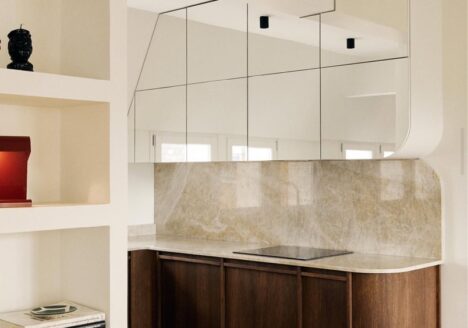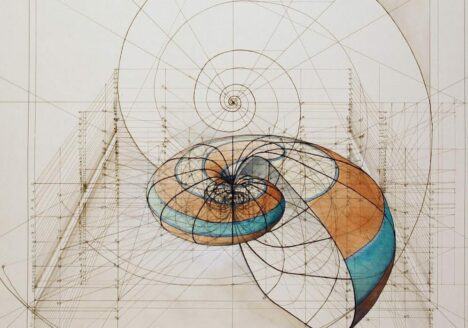Truly beautiful interiors aren’t just decorated–they’re designed with invisible rules that shape how we feel in the space.
People often think that a room is beautiful is down to the choice of colour, fabric, that very iconic chair, or the artwork. However, it is rarely about the items, but the considered disciplines; proportion, elimination, and editing that make the space look complete and inevitable.
Order
Throughout history, order has been introduced in interior and architecture in different ways. The ancient Greeks and Romans taught us the application of geometry in their buildings; the Japanese mastered how to embrace negative space in the practice of Ma (間); Renaissance architects and designers worked with symmetry, proportion, and geometry to create splendour.
The rooms that endure the test of time–whether a Florentine study or a Kyoto tea house–are not remembered because they followed a trend. They endure because designers exercised discipline. They understood restraint, proportion, and the poetry of alignment in design.
In modern interior design, these disciplines continue to guide the creation process. The discipline behind a room informs how we move through the space, how light travels within, and how the atmosphere appears. Without it, a room is simply a collection of objects. With it, a room becomes a memorable, unified experience.
Disciplines of Design
Proportion
Proportion is a defining factor in what is considered beautiful. A sofa that is too deep is awkward; a dining table that is too narrow feels uncomfortable; a chair that is too low for the dining table feels out of place. Often, we notice something is amiss in a room without identifying the cause–proportion is usually the reason.
Rhythm results from correct proportions: ceiling height is balanced with furniture size, artwork is scaled appropriately for the walls, and objects are arranged with intention. A well-planned room respects the eye’s natural search for order.
Restraint
Practicing discipline requires saying ‘no’ more often than saying ‘yes.’ This doesn’t mean following the path of minimalism; it means more editing. A room with restraint does not rush to fill every space, wall, or surface. Instead, it allows negative space to act as a complement, much like silence exists between musical notes.
Affluent clients often have the means to acquire many things , but luxury is not about accumulation. True refinement lies in choosing less, but choosing with care and intention.
Continuity
Beautiful rooms are not accidents. They have continuity–a subtle thread of material, tone, or geometry that ties the experience together. Continuity is what separates a room that feels curated from one that feels staged.
This discipline is less about matching and more about harmonising. A bronze ironmongery piece may echo the warmth of a Persian silk rug. A curve in a chair may echo the arc of a ceiling pendant. These small dialogues create coherence.
Applications in Interiors
Residential Spaces
When approaching residential spaces, the primary objective is to create a comfortable environment for the users. A family living room, for example, serves the whole family during the day and becomes a quiet retreat at night. Focusing on proportion, restraint, and continuity ensures the space is appropriate for all times and users.
Proportion is considered when we scale a sofa for conversation distance. We practice restraint by choosing a few larger artworks instead of a gallery wall. Continuity is achieved when wood tones are repeated across furniture and flooring. These disciplines, when harmonised, create homes that are cohesive and comfortable. A disciplined room is not filled with decorations but with atmosphere. Aligning the bed to the window, layering linen on stone or wood, and removing clutter create a restful space.
Commercial Spaces
In commercial design, discipline shapes brand identity and confidence. For example, a restaurant entrance with proportioned lighting and a controlled palette feels intentional. In a law firm, seating with the right proportions immediately echoes authority. Cohesion derived from these principles ensures that businesses have memorable and effective spaces.
The cultured client knows this intuitively. They can sense when a space has been “decorated” versus when it has been designed with care and intention.
Items in Focus
Objects in a disciplined room are not random decorations–they are architectural means. Three categories where discipline reveals itself:
Lighting as Architecture
Lighting is a key element in any design. It not only illuminates; it frames the space. Layered lighting–ambient, task, accent–creates architecture from shadows.
For clients seeking timeless fixtures, I often recommend sculptural forms in brass or glass that age gracefully. The recommended collection combines elegance with durability, offering fixtures that quietly anchor a room rather than shout for attention.
Storage as clarity
A disciplined room has a place for everything. Storage is not an afterthought; it is a design element. Oak cabinetry or modular shelving is not only functional but structural–it frames space, editing visual noise.
One discreet project option is a series of modular oak storage cubes. This line serves as both architecture and furniture, with modules that stack, align, and contain with quiet strength.
Material that ages well
Luxury is not about shiny perfection, but about what ages well over time. Marble, brass, leather, and wood grains all age well with use. Clients investing in these materials find that their rooms become richer over time.
What was discussed in Practice
Imagine entering a client’s reading room. The space contains three armchairs, a crowded bookshelf, a rug with busy patterns, and numerous lamps. At first glance, it lacks the cohesion seen in disciplined design.
Through discipline, we edit it: Two armchairs instead of three. A larger rug with subtle geometry or none, grounding the room without distraction. A curated bookshelf, with breathing space between books and objects. One sculptural lamp serves as both light and a focal point.
The result is not ‘less,’ but more. More focus, more presence, more clarity. The room can breathe, and so do the people interacting with this space.
It is the application of discipline–the unseen order–that makes a room feel assured, calm, and complete.
Luxury is not what fills a room, but what is allowed to remain empty.

